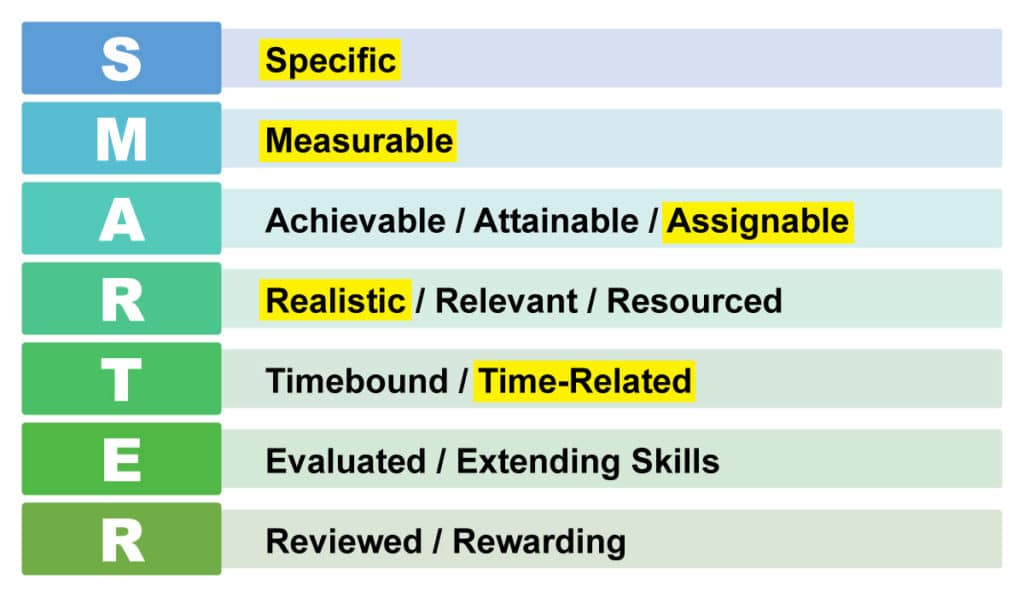
S.M.A.R.T. or S.M.A.R.T.E.R. Objectives?
How did it all begin?
In November 1981, in an edition of the American Management Association magazine, ‘AMA Forum’, George T. Doran published an article of less than 1,000 words called ‘There’s a S.M.A.R.T. way to write management’s goals and objectives’.
At the time, Doran was President of ‘Management Assistance Programs’, a management consultancy based in Idaho. Previously, he had been Director Of Corporate Planning for Washington Water Power Company in Spokane, Washington.
The article drew great attention from the world of management, and the acronym S.M.A.R.T. was born, rapidly entering the global language of business and corporate training! However, while being a useful tool, it is sometimes followed blindly by organizations, who have never fully understood the concept of what Doran was trying to convey, and who have never read his article. In the second paragraph he focuses on the debate around goals and objectives, taking an interesting position on the definitions of each…
‘Although it may be fashionable to debate the differences between goals and objectives in our graduate business schools, from a practical point of view the label doesn’t make any difference provided officers / managers agree on the meaning of these words. In some cases, goals are short-term and objectives are long-term. In others, the opposite is true. To other organizations, goals and objectives are synonymous. Time should not be wasted in debate over these terms. The important consideration is not to have the label get in the way of effective communication.’
What comes across from the whole article is that there is ‘flexibility’ in the approach to creating your S.M.A.R.T. Objectives (and Goals!). Managers should take on board this message of ‘thinking creatively’ and not sticking rigidly to the 5 key words. Times are always changing; Doran recognised that fact. Indeed, some may be surprised to learn that Doran’s original S.M.A.R.T. was the following, (with his original comments):
- Specific: target a specific area for improvement.
- Measurable: quantify, or at least suggest, an indicator of progress.
- Assignable: specify who will do it.
- Realistic: state what results can realistically be achieved, given available resources.
- Time-related: specify when the result(s) can be achieved.
As an example of evolution… many reading this will be aware that the ‘A’ quickly became ‘Achievable’. But isn’t ‘Assignable’ still something to consider? Who will be responsible?
At Spearhead we constantly absorb change. George Doran did not see his 5 as set in stone; he had flexibility of thought. So do we!
Below are S.M.A.R.T.E.R. Objectives you may wish to consider going forward… they include the original 5 highlighted, but with 9 additional criteria, some of which you may want to include to assist your future planning.
You decide what will work best for your organization! Perhaps there are others that we have not considered, but that would work for you. If so… innovate!




